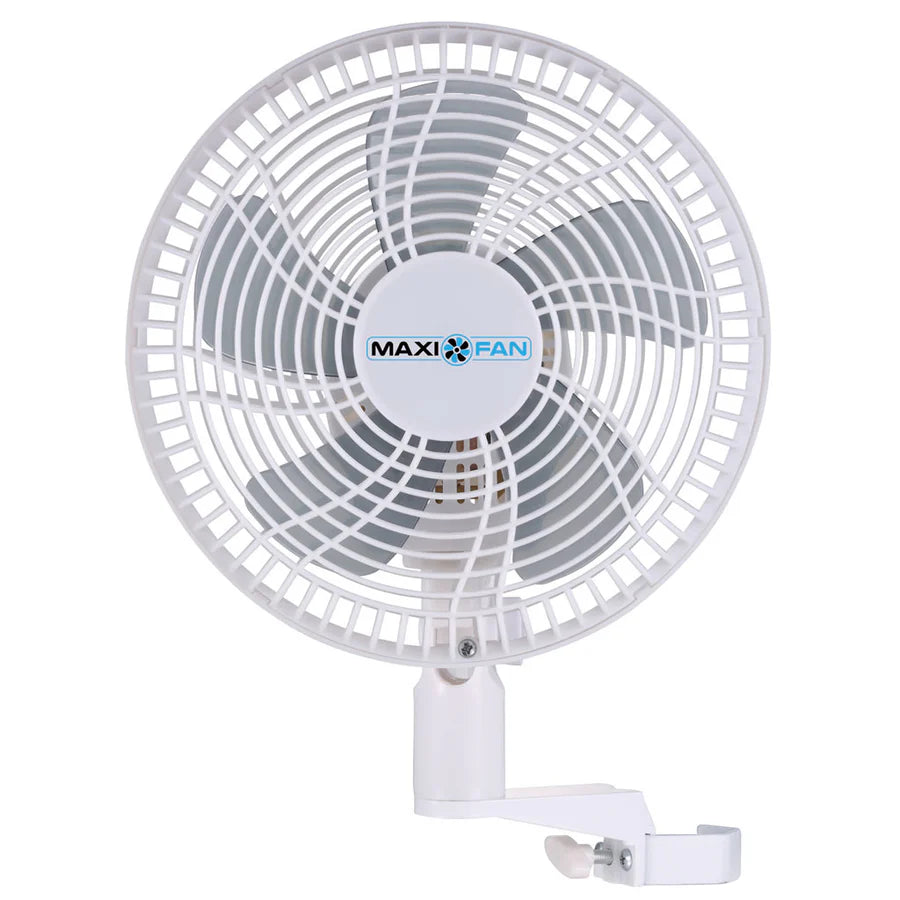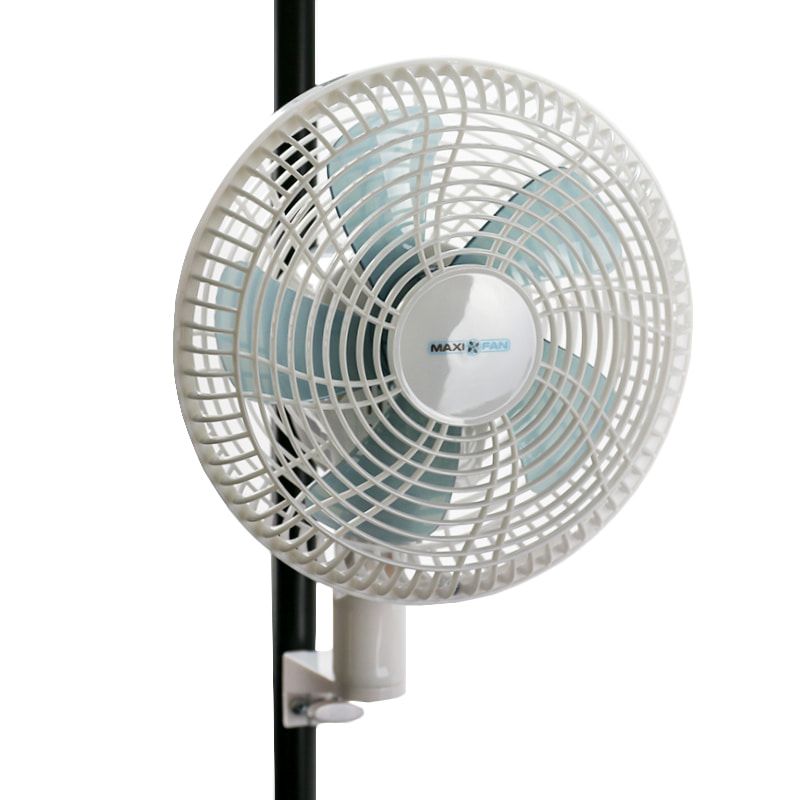Description
Maxifan Clip-On Fan
Maxifan Clip-On Fan helps your plants cope with increased temperatures, allowing them to transpire more water to cool down. Proper air movement reduces microclimates, improving the accuracy of any measurements taken. This allows you to fine tune the growing environment through a better understanding.
Maxifan 6-inch Clip-On Fan
Clip-on fans are perfect for grow tents and smaller grow spaces. The Maxifan 6-inch clip-on fans secure to anything smaller than 4 cm diameter. This allows you to position the fan anywhere that needs increased airflow. Clip-on fan’s leave more room for plants.
Fan features:
- 2-speed
- Takes up no floor space
- Attach to anything up to 4 cm diameter
Maxifan 8-inch Oscillating Clip-On Fan
In addition to all the features of the smaller 6-inch clip on fan, Maxifan designed an 8-inch oscillating fan. This fan rotates through 110 degrees, providing airflow over a much larger space. A perfect option if you’re in a tent as you get the benefits of oscillation without the footprint normally associated with pedestal fans.
Fan features:
- 2-speed
- Oscillates through 110 degrees
- Takes up no floor space
- Attach to anything up to 4 cm diameter
Using Fans - Best Practice
Position fans so the air flow diffuses by blowing against a wall or light fixtures, rather than blowing straight at plants.
Power Requirements
This range of fans operate on 240V AC via an included 3-pin plug.
Garden tip: Always keep the power connections elevated. Ensure the fans are plugged in to power points or controllers and powered up away from sources of water where the potential for splashing or electric shock may occur.
More Fans At lower speeds
Professionals recommend using multiple fans on a low setting rather than fewer on high power.
Too much or consistent direct wind exposure can damage or cause your plants stress.
Causes of Plant Stress From Wind Exposure
Too much or direct wind exposure can stress plants as they fight to intensify transpiration levels to match the increased fluid leaving the plant’s stomata. It can also cause windburn on leaves.
Plant damage or stress can lead to slowed or stunted growth with lower yields.


